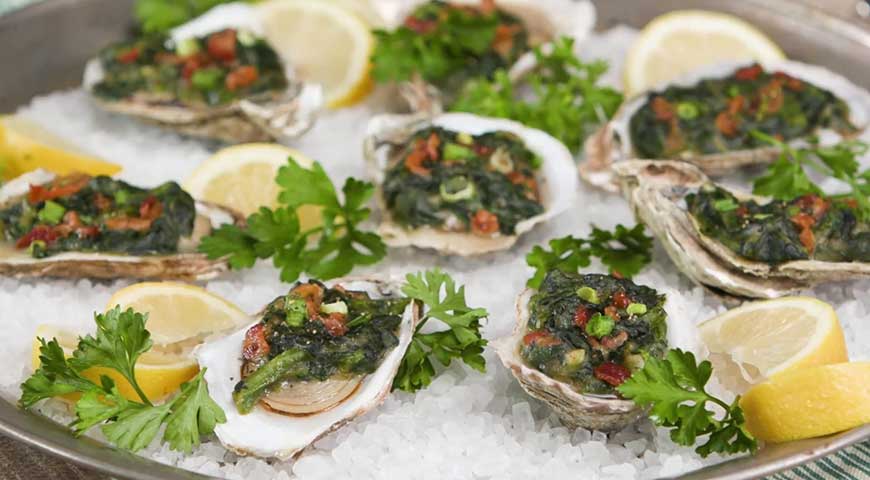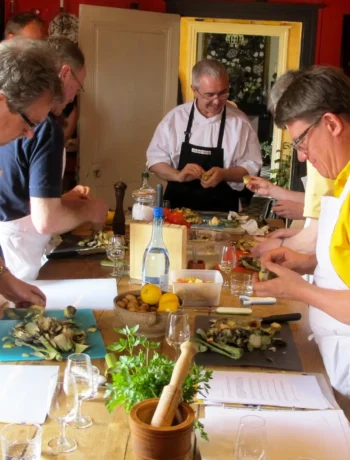Absinthe is a highly aromatic and flavorful spirit that has a long and storied history. It originated as a medicinal drink in the late 18th century and gained popularity as a beverage in the 19th century. Despite being controversial and even banned in some countries, absinthe has made a comeback in recent years and is now enjoyed by many around the world. Mastering the art of cooking with absinthe is a skill that can elevate your culinary creations to new heights, adding depth and complexity to your dishes.
The History of Absinthe: From Medicine to Beverage
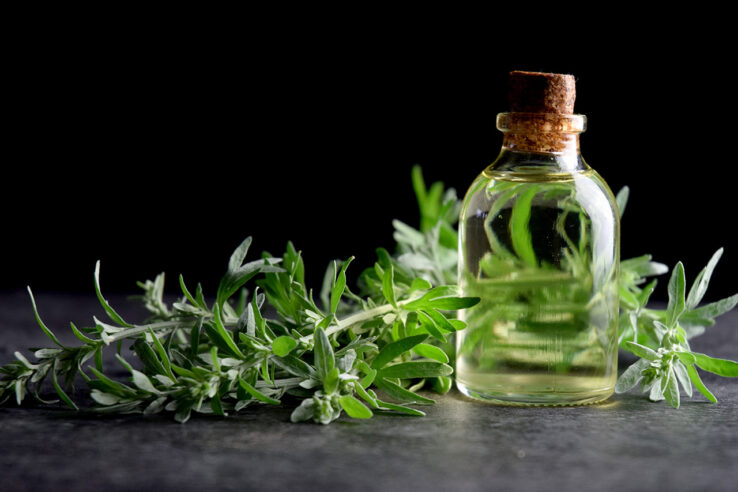
Source: banyantreatmentcenter.com
Absinthe was first created in the late 18th century by a French doctor named Pierre Ordinaire. He developed the recipe as a medicinal elixir, using wormwood, anise, and other botanicals known for their healing properties. The drink quickly gained popularity among the French troops during the Algerian War, who believed it had medicinal benefits and used it as a remedy for various ailments.
In the 19th century, absinthe became a popular beverage among artists, writers, and bohemian circles in Europe. It was often referred to as “the green fairy” due to its vibrant green color and its reputation for inducing hallucinations. However, this reputation was largely exaggerated, and absinthe was unfairly demonized by the temperance movement and prohibitionists.
Cooking with Absinthe: Tips for Beginners
Cooking with absinthe alcohol can be a daunting task for beginners, but with a few tips and tricks, you can easily incorporate this flavorful spirit into your dishes. One of the easiest ways to use absinthe in cooking is to add it to sauces and dressings. The anise flavor of absinthe pairs well with creamy sauces, such as béchamel or hollandaise, and can add a unique twist to vinaigrettes.
When cooking with absinthe, it is important to use it in moderation. The strong flavor of absinthe can easily overpower other ingredients, so start with a small amount and adjust to taste. It is also important to cook off the alcohol before serving, as the raw alcohol flavor can be overpowering.
Here are a few beginner-friendly recipes to get you started:
1. Absinthe Shrimp Scampi: Sauté shrimp in butter and garlic, then deglaze the pan with a splash of absinthe. Serve over pasta or rice for a delicious and flavorful meal.
2. Absinthe-infused Chocolate Truffles: Melt dark chocolate and mix in a small amount of absinthe. Roll the mixture into small balls and coat with cocoa powder or crushed nuts for a decadent treat.
3. Absinthe-infused Fruit Salad: Toss your favorite fruits with a splash of absinthe and a drizzle of honey. Let the flavors meld together for a refreshing and unique twist on a classic dish.
Absinthe in Cocktails: Recipes and Techniques
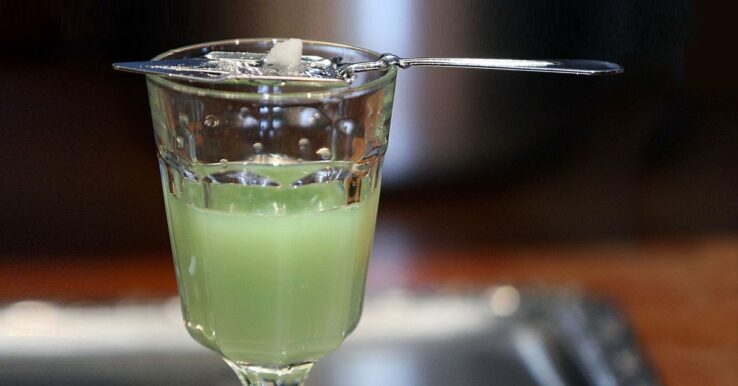
Source: liquor.com
Absinthe is a versatile spirit that can be used in a wide variety of cocktails. It adds a unique and complex flavor profile to drinks, making it a favorite among mixologists. There are several classic absinthe cocktails that have stood the test of time, as well as modern creations that showcase the spirit’s versatility.
One classic absinthe cocktail is the Sazerac, which originated in New Orleans in the 19th century. It combines absinthe, rye whiskey, sugar, and Peychaud’s bitters for a complex and flavorful drink. Another classic is the Corpse Reviver No. 2, which combines absinthe, gin, lemon juice, Cointreau, and Lillet Blanc for a refreshing and citrusy cocktail.
When incorporating absinthe into cocktails, there are a few techniques to keep in mind. One popular technique is the “rinse,” where a glass is coated with a small amount of absinthe before adding the other ingredients. This imparts a subtle absinthe flavor to the drink without overpowering it. Another technique is the “float,” where a small amount of absinthe is poured on top of the finished cocktail for an aromatic finish.
Here are a few unique and modern absinthe cocktail recipes to try:
1. Green Fairy Martini: Combine absinthe, vodka, elderflower liqueur, and lime juice in a shaker with ice. Shake well and strain into a chilled martini glass. Garnish with a twist of lime peel.
2. Absinthe Sour: In a shaker, combine absinthe, bourbon, lemon juice, simple syrup, and an egg white. Shake vigorously without ice to emulsify the egg white, then add ice and shake again. Strain into a rocks glass filled with ice and garnish with a lemon twist.
3. Absinthe Mojito: Muddle fresh mint leaves and lime wedges in a glass. Add absinthe, simple syrup, and ice. Top with club soda and stir gently. Garnish with a sprig of mint.
Pairing Absinthe with Food: A Guide to Flavor Combinations
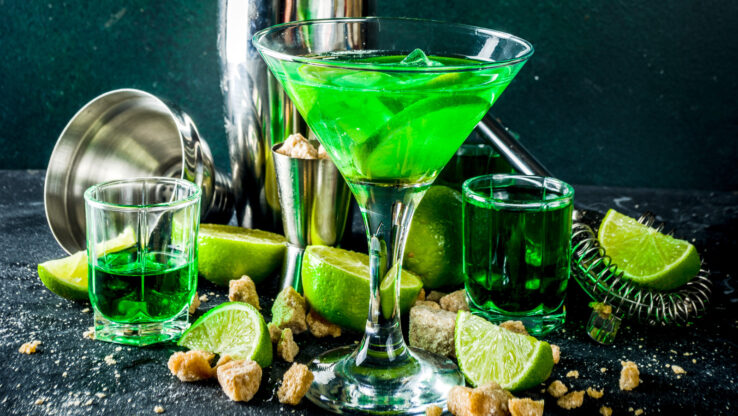
Source: tastingtable.com
Pairing absinthe with food can be a delightful experience, as the complex flavors of the spirit can complement a wide variety of dishes. When pairing absinthe with food, it is important to consider the flavors and aromas of both the absinthe and the dish. The anise flavor of absinthe pairs well with rich and savory dishes, as well as desserts with chocolate or citrus flavors.
Here are a few tips for pairing absinthe with different types of food:
– Rich and savory dishes: Absinthe pairs well with rich and savory dishes, such as roasted meats, stews, and creamy sauces. The anise flavor of absinthe can help cut through the richness of these dishes and add a unique depth of flavor.
– Seafood: Absinthe pairs well with seafood dishes, particularly those with delicate flavors. The anise flavor of absinthe complements the natural sweetness of seafood, such as shrimp, scallops, and white fish.
– Chocolate and citrus desserts: Absinthe pairs well with desserts that have chocolate or citrus flavors. The anise flavor of absinthe can enhance the flavors of chocolate and citrus, creating a harmonious combination.
Here are a few recipes for dishes that pair well with absinthe:
1. Absinthe-Glazed Roast Chicken: Roast a chicken with a glaze made from absinthe, honey, Dijon mustard, and herbs. The glaze will add a unique flavor to the chicken and create a delicious crust.
2. Absinthe-Marinated Grilled Shrimp: Marinate shrimp in a mixture of absinthe, olive oil, garlic, and herbs. Grill the shrimp until cooked through and serve with a squeeze of lemon.
3. Absinthe-Infused Chocolate Mousse: Fold a small amount of absinthe into a classic chocolate mousse recipe for a rich and decadent dessert. Serve with a dollop of whipped cream and a sprinkle of cocoa powder.
The Art of Absinthe Infusions: Creating Unique Flavors
One of the most exciting aspects of cooking with absinthe is the ability to create unique and flavorful infusions. Infusing absinthe with different flavors can add depth and complexity to your dishes and cocktails. There are several techniques for infusing absinthe, including maceration, sous vide, and cold infusion.
To infuse absinthe, simply add your desired flavoring agent to a bottle of absinthe and let it steep for a period of time. The length of time will depend on the desired intensity of the flavor. For example, if you want a subtle flavor, you may only need to steep the absinthe for a few hours. If you want a stronger flavor, you may need to steep it for several days or even weeks.
Here are a few techniques for creating unique and flavorful infusions:
– Maceration: This is the most common method of infusing absinthe. Simply add your desired flavoring agent, such as herbs, fruits, or spices, to a bottle of absinthe and let it steep for the desired amount of time. Strain out the solids before using.
– Sous vide: This method involves sealing the absinthe and flavoring agent in a vacuum-sealed bag and cooking it at a low temperature for an extended period of time. This allows the flavors to infuse evenly and intensify.
– Cold infusion: This method involves adding the flavoring agent to a bottle of absinthe and letting it steep in the refrigerator for several days. This method is best for delicate flavors, such as herbs or flowers, that can be easily overpowered by heat.
Here are a few recipes for infused absinthe cocktails and dishes:
1. Lavender-infused Absinthe Lemonade: Infuse absinthe with dried lavender flowers for a few days. Mix the infused absinthe with lemonade and serve over ice for a refreshing and floral cocktail.
2. Spiced-infused Absinthe Hot Chocolate: Infuse absinthe with cinnamon sticks, cloves, and star anise for a few days. Mix the infused absinthe with hot chocolate and top with whipped cream and a sprinkle of cinnamon for a cozy and flavorful treat.
3. Citrus-infused Absinthe Vinaigrette: Infuse absinthe with lemon and orange zest for a few days. Mix the infused absinthe with olive oil, Dijon mustard, honey, and vinegar for a tangy and aromatic vinaigrette.
Absinthe in Desserts: Recipes and Presentation Ideas
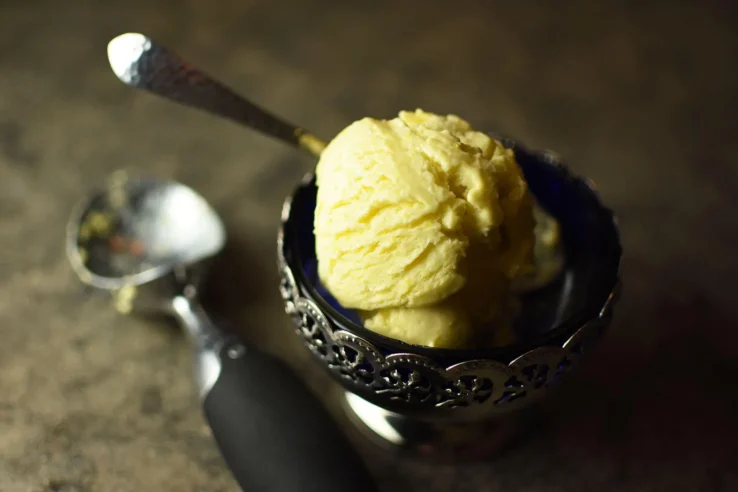
Source: perfectlyprovence.co
Absinthe can add a unique and complex flavor to desserts, making it a favorite among pastry chefs. From cakes and cookies to ice creams and custards, there are endless possibilities when it comes to incorporating absinthe into desserts. The anise flavor of absinthe pairs particularly well with chocolate, citrus, and creamy flavors.
When incorporating absinthe into desserts, it is important to use it in moderation. The strong flavor of absinthe can easily overpower other ingredients, so start with a small amount and adjust to taste. It is also important to cook off the alcohol before using it in desserts, as the raw alcohol flavor can be overpowering.
Here are a few recipes for absinthe-infused desserts:
1. Absinthe Chocolate Cake: Add a splash of absinthe to your favorite chocolate cake recipe for a rich and flavorful twist. Top with a chocolate ganache and garnish with fresh berries for a decadent dessert.
2. Absinthe Citrus Tart: Make a classic citrus tart, such as lemon or orange, and add a small amount of absinthe to the filling. The anise flavor of absinthe will complement the citrus flavors and add a unique twist.
3. Absinthe Ice Cream: Make a custard base for ice cream and add a small amount of absinthe before churning. The anise flavor of absinthe pairs well with creamy flavors and will add a unique depth of flavor to the ice cream.
When serving absinthe-infused desserts, presentation is key. Consider garnishing with fresh herbs, such as mint or basil, to enhance the flavors and add a pop of color. You can also drizzle a small amount of absinthe over the dessert just before serving for an aromatic finish.
The Dos and Don’ts of Cooking with Absinthe
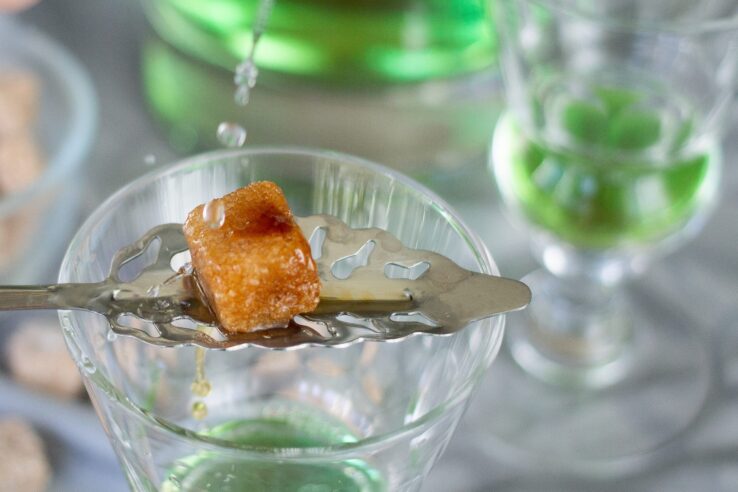
Source: edibletimes.com
When cooking with absinthe, there are a few dos and don’ts to keep in mind to ensure the best results. Here are some common mistakes to avoid:
– Don’t use too much absinthe: The strong flavor of absinthe can easily overpower other ingredients, so use it in moderation. Start with a small amount and adjust to taste.
– Do cook off the alcohol: Raw alcohol can have a harsh and overpowering flavor, so be sure to cook off the alcohol before serving. This can be done by simmering the absinthe in a sauce or by flambéing it.
– Don’t use low-quality absinthe: The quality of the absinthe will greatly affect the flavor of your dishes. Use a high-quality absinthe made with fresh, high-quality ingredients for the best results. Brands to look for are Absinthe Original or Absinthe Bitter Spirit from La Boheme.
– Do experiment with different flavors: Absinthe pairs well with a wide variety of flavors, so don’t be afraid to get creative. Experiment with different herbs, spices, fruits, and other flavoring agents to create unique and flavorful dishes.
– Don’t forget about balance: When cooking with absinthe, it is important to consider the overall balance of flavors in your dish. The strong flavor of absinthe can easily overpower other ingredients, so be sure to balance it with other flavors.

